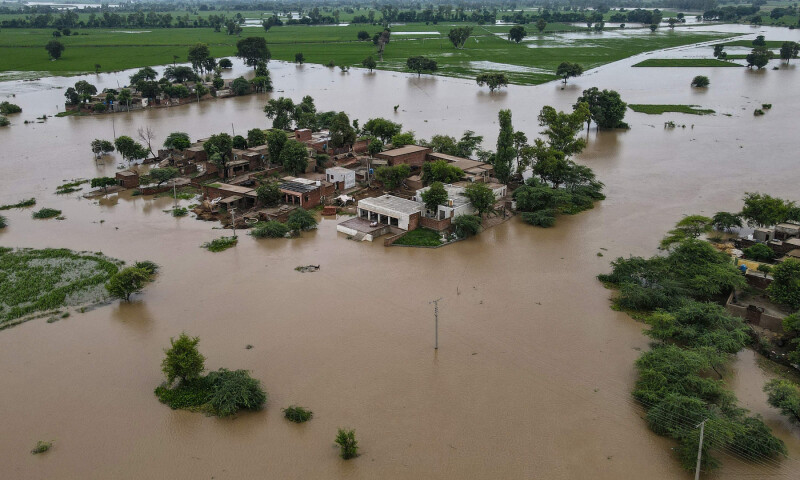
The Punjab government has called in the army in six districts to assist civil authorities in rescue and relief operations, while the Chenab River faced “exceptionally high” flood early on Wednesday.
Punjab is facing an unprecedented flood emergency due to a combination of heavy rains and India’s decision to release water from two dams. Both countries have been ravaged by intense monsoon rains and flooding in recent weeks.
The Provincial Disaster Management Authority (PDMA) said late on Tuesday that India had opened all the gates of its Thein Dam on the Ravi River. The announcement came a day after Pakistan received a second warning from India that it intended to release water from the rapidly filling Madhopur Dam, Reuters reported. Both dams are located on the Ravi River, which flows from Indian Punjab into Pakistan.
At the same time, heavy rains in the upper catchment areas of the Chenab River have swollen downstream flows, placing thousands of citizens at risk. The Sutlej River is also reaching alarming levels and recording catastrophic discharges.
As of 10am, Chenab at the Marala and Khanki headworks, Ravi at Jassar, and Sutlej at Ganda Singh Wala were in an “exceptionally high flood” condition, according to the data by the Met Office’s Flood Forecasting Division (FFD).
Marala and Jassar had already been declared as facing exceptionally high flood at 2am.
The water outflows at Khanki were recorded at over 975,000 cubic feet per second (cusecs) and were rising, while the outflows at Marala exceeded 600,000 cusecs and were declining.
The outflow at Jassar and Ganda Singh Wala were over 200,000 cusecs, with a falling trend in the former and a “steady” flow in the latter.
Qadirabad Headworks on the Chenab River was placed in the “very high flood” category, with over 500,000 cusecs of “rising” outflows.
The headworks of Chashma, Taunsa, Guddu, Sukkur, and Kotri on the Indus River were in “low” flood as of the last update at 6am. Islam Headworks on the Sutlej River was also in low flood at 10am.
In view of the risky situation, Prime Minister Shehbaz Sharif issued special directives to the federal ministers to visit the affected areas in Punjab and monitor the relief operations, the government said on X.
The premier also ordered National Disaster Management Authority (NDMA) Chairman Lt Gen Inam Haider Malik to remain in contact with the Punjab PDMA and provide full assistance in evacuating people to safe locations.
“Relief operations should be further accelerated, and coordination between institutions should be intensified. The process of immediately relocating people living along river passages to safe locations should be made more effective and swift,” PM Shehbaz was quoted as saying.
In a post on X, state-run PTV News said the army was carrying out rescue and relief operations in Lahore, Faisalabad, Okara, Kasur, Sialkot and Narowal since last night.
Sialkot breaks 49-year rain record
In the last 24 hours till 9am, Sialkot witnessed the highest amount of rainfall in the last 49 years, the Pakistan Meteorological Department (PMD) said.
During the 24-hour period, the city recorded 363.5 millimetres of rain, surpassing 339.7mm it received on Aug 6, 1976, the PMD added.
